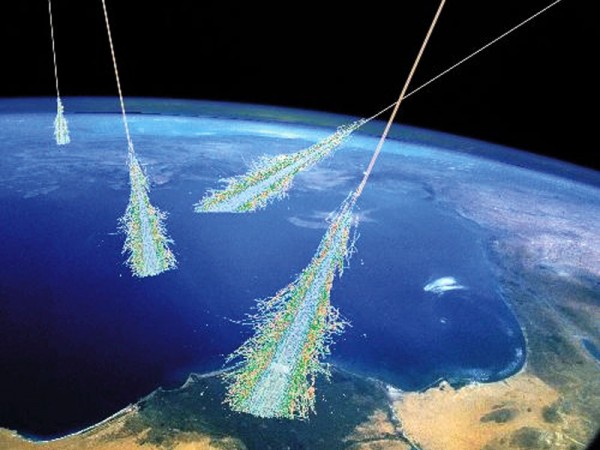“All our sweetest hours fly the fastest.” -Virgil
The speed of light in a vacuum is the limit for massless particles, but massive ones are limited even further! Have you ever wondered about that?
 Image credit: ICEPP via https://www.icepp.s.u-tokyo.ac.jp/history/lep-e.html (L); LEP / CERN, via http://www.madrimasd.org/ (R).
Image credit: ICEPP via https://www.icepp.s.u-tokyo.ac.jp/history/lep-e.html (L); LEP / CERN, via http://www.madrimasd.org/ (R).
We can get particles in accelerators up to 99.9999999988% the speed of light, and the Universe makes ones that are even faster! But despite all of this, there's a limit, and that limit is more restrictive than the speed of light in a vacuum!
What is it, and where does it come from?
Go read the whole thing here, and try not to go that fast, even in your sci-fi dreams!


Besides the concept of fixed maximum speed, another concept of relativity is that speed can only be measured (exist) relative to something else.
Is the cosmic background radiation some sort of fixed reference frame so that it will fry us when we speed up relative to that?
@Anne Blankert #1: The CMB _is_ the "rest frame of the Universe." That is, it does provide a frame which multiple observers could, in principle, use to assign each other particular velocities.
However, that situation does not violate Einsteinian relativity, any more than does having all of us here on the planet measure our speeds relative to the "fixed rest frame" of the ground. We can use special relativity to compute what the CMB would look like to any observer, travelling with any speed with respect to us or to the CMB itself.
In fact, we know our own speed relative to the CMB, because the data includes a dipole component. That is, there is a particular direction (roughly in the direction of Virgo, I believe) toward which we are moving (at about 370 km/s), with respect to the rest of the Universe.
@Michael Kelsey #2:
Do I remember correctly that the actual observation of that dipole component was delayed because it was largely negated by the current solar system orbital velocity of about 220 km/s in almost exactly the opposite direction? I think that tidbit was in a book about COBE.
I fact, I think the Milky Way as a whole was observed to move at close to 600 km/s and that 370 would then be the current net effect seen here.
@CatMat #3: I'm afraid I don't know the COBE history. However, I do know that the dipole component is a direct measure of the _Earth's_ motion, not the motion of the Milky Way. There is a small (~30 km/s) component due to the Earth's orbit; the dominant feature in the dipole is the Sun's motion through the galaxy (which is about 220 km/s, as you wrote).
The Milky Way's speed relative to the CMB has to be derived, by taking into account the Sun's orbital vector, plus the direction of the galactic center. It ends up being about 552 km/s.
It is very interesting to know that we are capable of reaching the speed of light using small particles. How does the universe make particles accelerate faster than the speed of light? What is the 'limit' and of what does it consist?
@shannon #5: You've got a few misconceptions; I hope I can help to clean things up for you.
Particles, whether we accelerate them or Nature does, don't "reach" the speed of light. They can get very close to it, but they don't reach or exceed it.
Here on Earth, we accelerate particles using a combination of electric and magnetic fields. The electric fields push on the particles' charge, to give them more energy. The magnetic fields bend the particles along curved paths. By combining the two, we can make the particle go around in circles, gaining more and more energy on each circuit.
Something similar happens in nature. Galaxies have magnetic fields associated with them, and the gas of the galaxy is often ionized, so there are electric fields present. Also, explosions like supernovae can accelerate particles "mechanically" (that is, from the explosion itself).
As for the cosmological speed limit, I suggest that you go back and read Ethan's article, since he explains it fairly clearly.